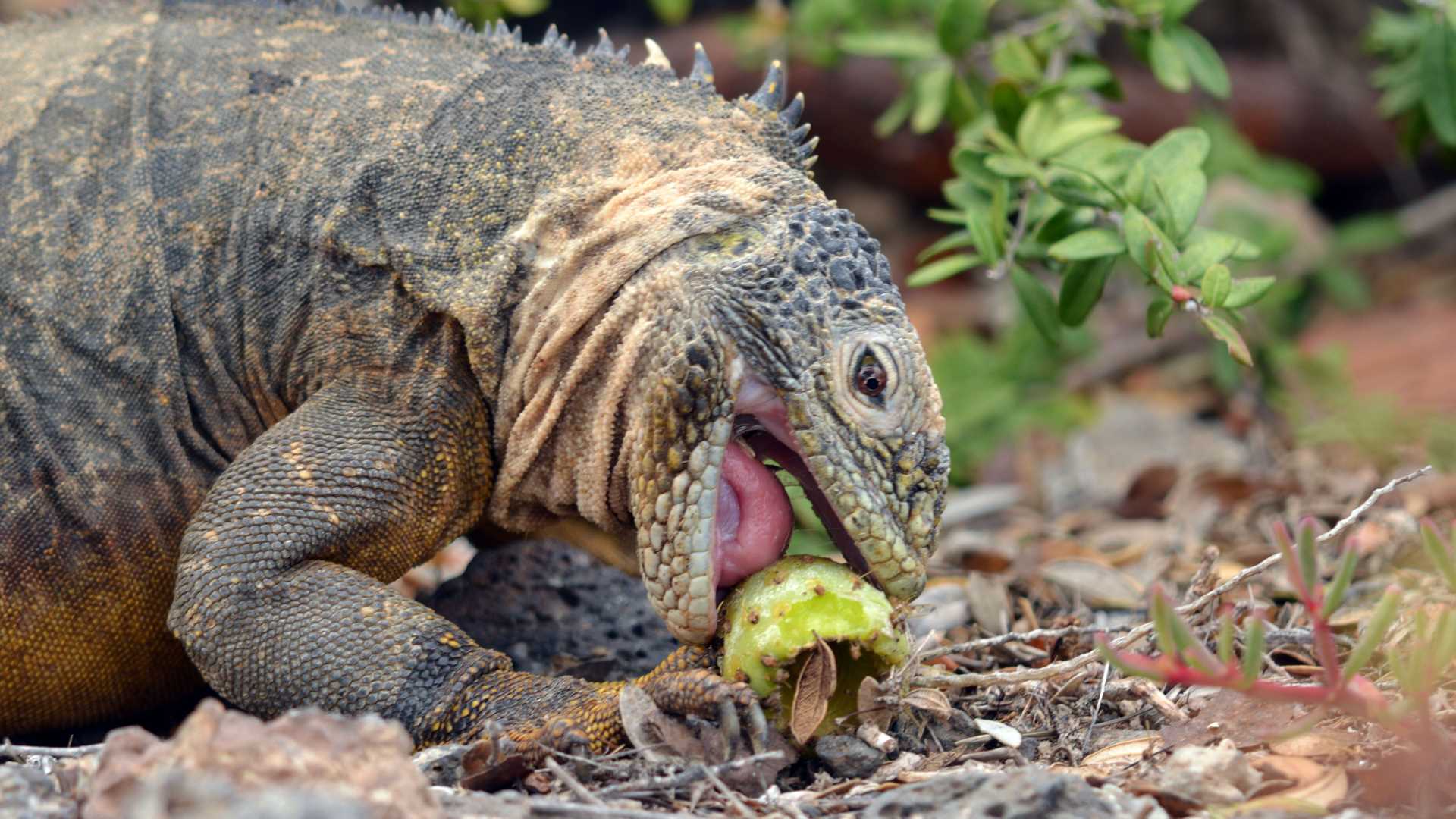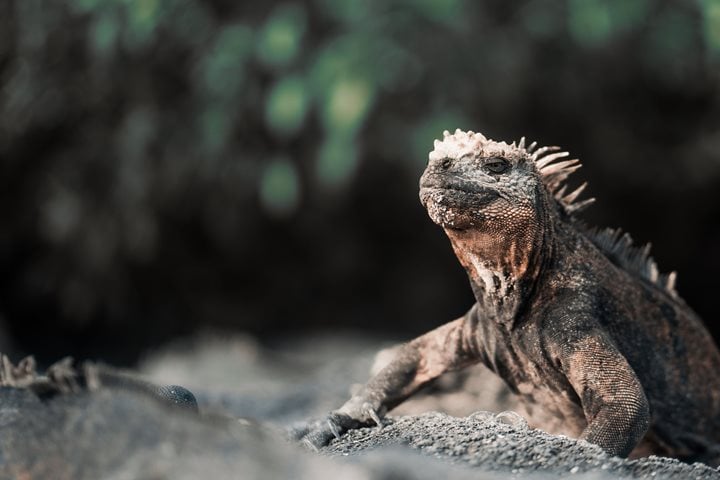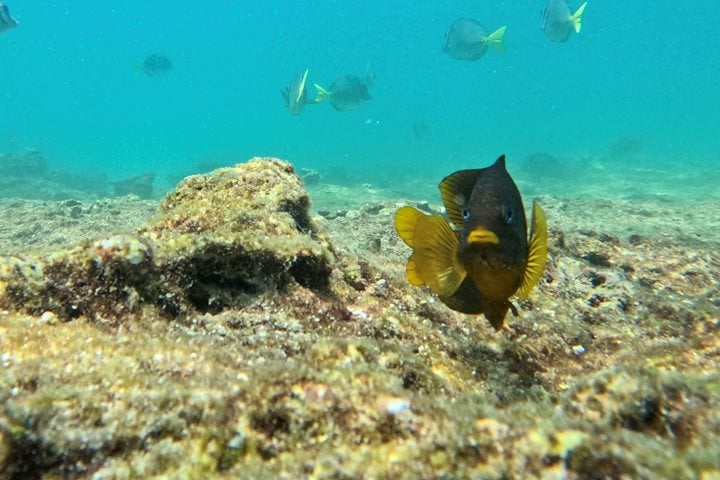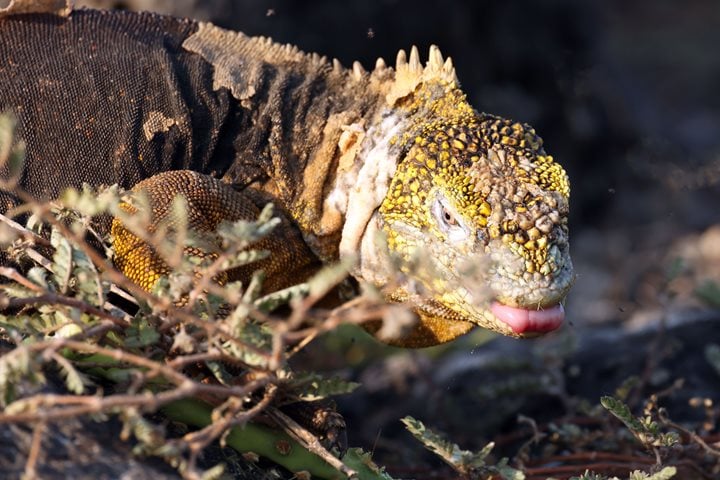The Galapagos Islands are famous for the incredible natural history that captivated the famous naturalist Charles Darwin when he visited in 1835. Darwin’s theory of evolution by natural selection is widely accepted today. The land iguana, one of the most beautiful creatures of the Galapagos, captivated Darwin. There are three species of these reptiles on different islands, all of them endemic, and today we visited the habitat of two of them on Plaza Sur and Santa Fe Islands.
Early in the morning, we boarded Zodiacs to visit Plaza Sur Island. Although small in size, this island is beautiful with unique flora and fauna. The small landing dock looked empty, but in the water, sea lions gamely played in the shallows under the watchful eye of a male sea lion, who barked to mark his territory. Walking inland, we came across some land iguanas (Conolophus Subcristatus or yellow iguana) feeding on cacti, while others emerged from their burrows after a cold and windy night. Along the cliffs, we observed many swallow-tailed gulls (the only nocturnal seagull in the world) returning to the island after a long night spent fishing around the Galapagos. At the pier, we found some iguana nesting sites, and many juvenile sea lions slept peacefully along the coast despite our presence.
After breakfast, the sun began to warm the atmosphere a bit, and our guests had the opportunity to take a refreshing dip from the boat. After this, National Geographic Islander II weighed anchor, and we began sailing toward Santa Fe Island.
In the afternoon, we started our activities inside the bay. Some of our guests preferred snorkeling, while others kayaked along the calm, clear waters of the island. We spotted many sea turtles and some whitetip reef sharks. Of course, the Galapagos sea lions delighted our guests. At the end of kayaking, we found a pleasant surprise as more than ninety eagle rays swam very close to us.
Later in the afternoon, we started our last activity on Santa Fe Island. The landing beach looked completely full of sea lions. We observed a female who recently gave birth with her small and beautiful baby. We could still see the placenta and traces of blood. On our way inland, the landscape changed dramatically, including many completely dry palo santo trees, typical during this dry season. Almost at the end of the trail, we came across some endemic land iguanas from Santa Fe Island (Conolophus Pallidus). Unlike the iguanas we found in the morning in Plaza Sur, this iguana is completely pale. They were inactive due to the cold weather. Low temperatures and a lack of rain greatly affect the behavior of land iguanas.
Just before sunset, we arrived at the beach. It was full of sea lions arriving from the ocean after a long day spent fishing in the open waters. The last beams of sun colored the mountains. In the air, seabirds returned to their nests after a magnificent day in this natural paradise called Galapagos.







